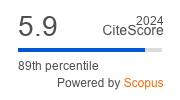Article | Open Access
Scientific Information Literacy: Adaption of Concepts and an Investigation Into the Chinese Public
| Views: | 2814 | | | Downloads: | 2013 |
Abstract: Many studies have developed the concepts and measurements of scientific and information literacy. However, the changes in the media environment, the complexity of scientific information, and low entry barriers have brought new challenges to scientific information communication. A single scientific or information literacy concept cannot provide a clear overview of the competencies and literacy required for individuals to access scientific information in new media contexts. This study aims to adapt the existing concepts and measurement frameworks related to information literacy in science communication and to investigate scientific information literacy and the demographic differences among the Chinese public through a cross-sectional survey (N = 2,983). The results showed that compared to self-directed information acquisition, accurate information filtering, and information sharing and dissemination, the Chinese public has relatively lower levels of information credibility assessment and opinion expression. Besides, the scientific literacy levels among the Chinese public had significant differences according to gender, age, and education. This study argues that adapting current information literacy concepts into science communication can promote public understanding of scientific information. The concept of scientific information literacy should be considered as a means of understanding the impact of new media on scientific information communication. The contribution of this study is that it adapts existing concepts into a novel context, further enriching the empirical research on scientific literacy and the research perspective on science communication.
Keywords: information literacy; literacy investigation; new media; science communication; scientific literacy
Published:
© Han Wang, Lina Li, Jing Wu, Hao Gao. This is an open access article distributed under the terms of the Creative Commons Attribution 4.0 license (http://creativecommons.org/licenses/by/4.0), which permits any use, distribution, and reproduction of the work without further permission provided the original author(s) and source are credited.


